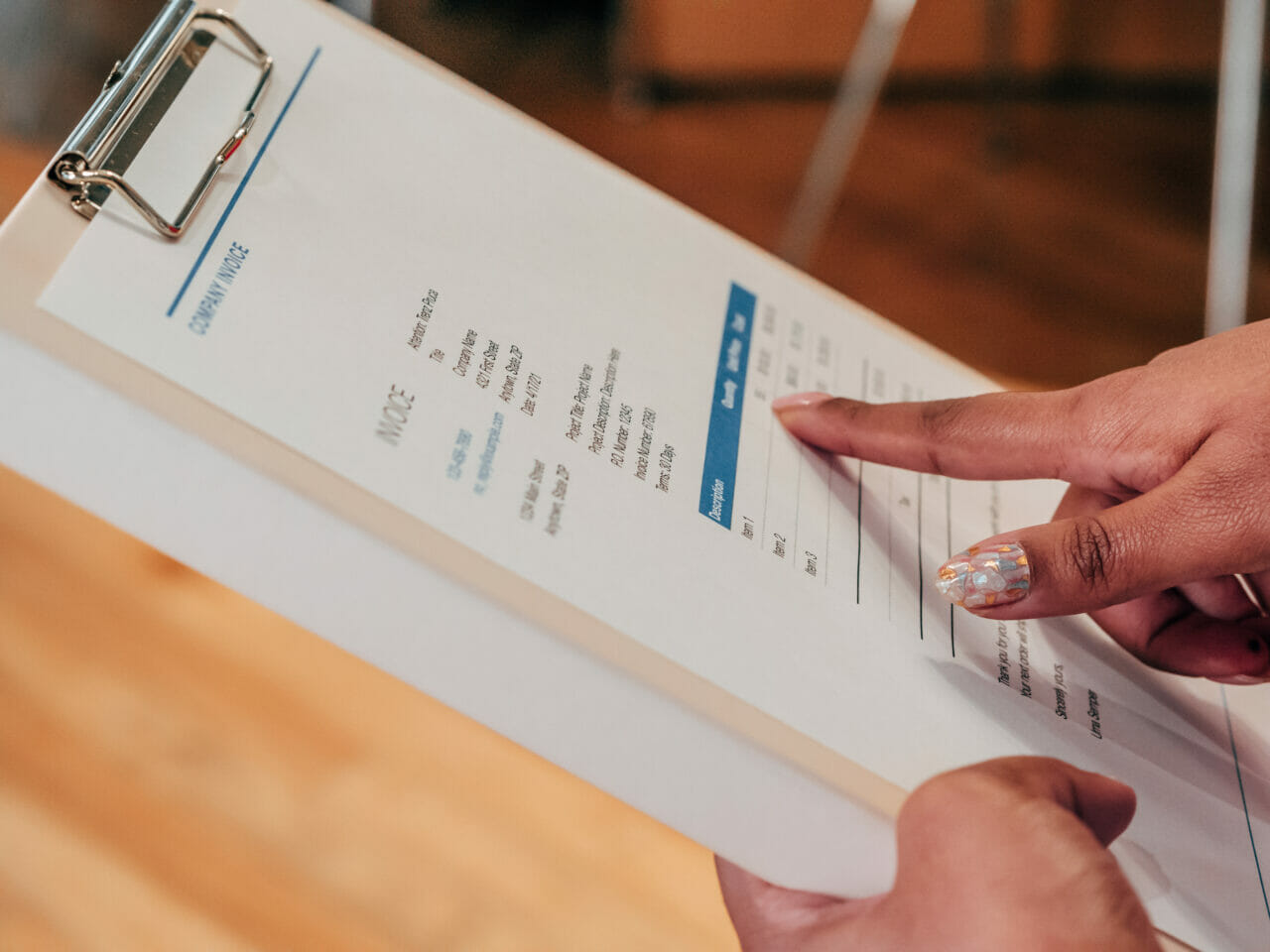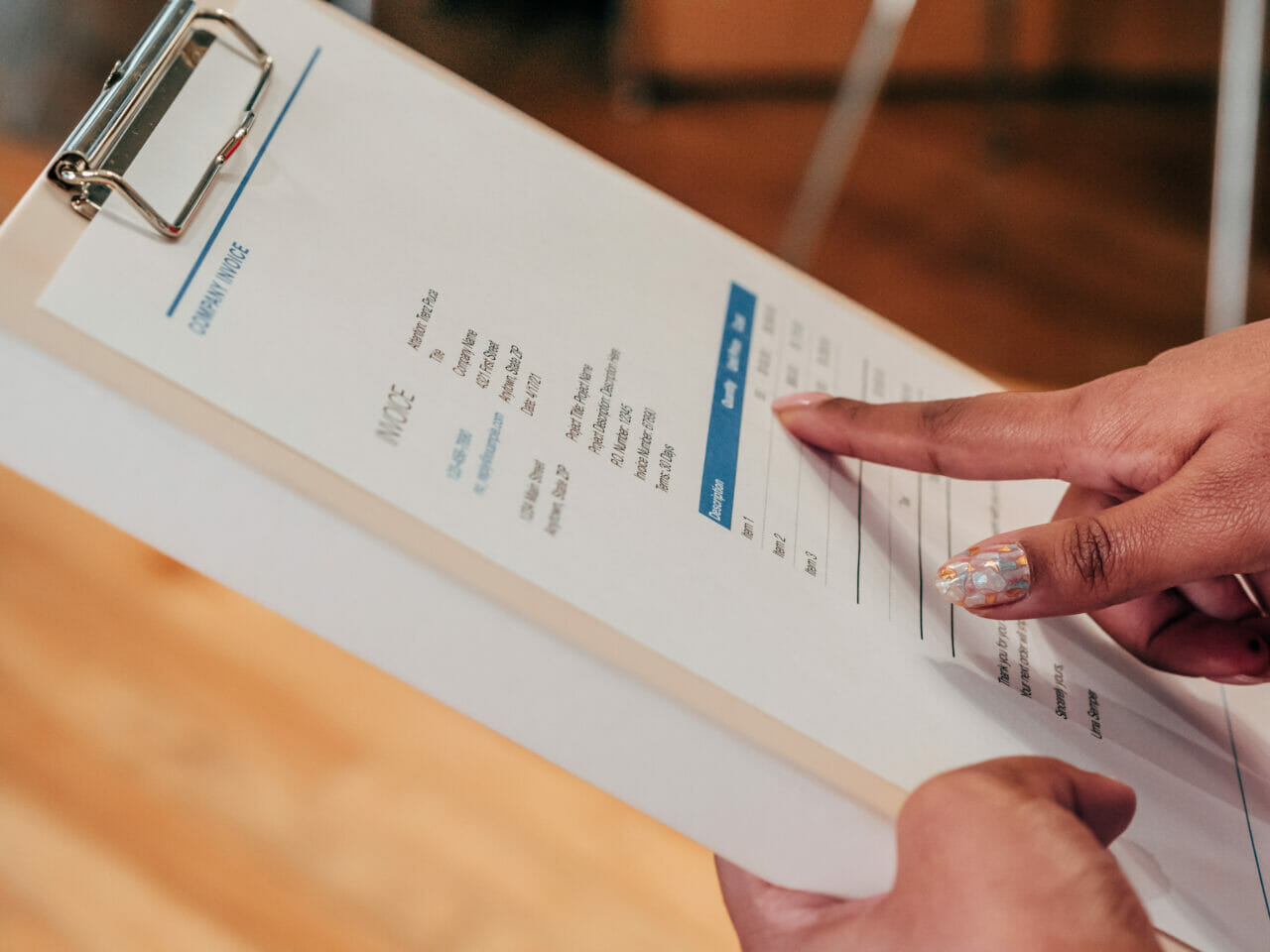“Cash is king,” as the saying goes, and accounts receivable turnover plays an essential role in keeping the cash flowing. Knowing how to measure and monitor your accounts receivable turnover ratio can help you ensure that you’re getting paid on time and improving your cash flow. In this article, we’ll discuss what the accounts receivables turnover ratio is, how to calculate it, how it’s different from asset turnover ratio, why it’s important for financial modeling, and more. So let’s dive into understanding accounts receivable turnover so you can maximize your profits!
What Is the Accounts Receivables Turnover Ratio?
The accounts receivables turnover ratio is utilized in financial modeling to determine how efficiently and promptly a company is collecting payments from customers. It measures the number of times the company collects its average accounts receivable balance in a given period and provides valuable insight into the company’s collection efforts. A healthy accounts receivable turnover ratio indicates that the company is doing well in managing its line of credit process and efficiently turning cash into profits. On the other hand, a low ratio may indicate that the company is having difficulty collecting payments or needs to revise its credit terms and policies. By keeping close tabs on their AR turnover, businesses can make sure they are getting paid on time and controlling their cash flow.
Formula and Calculation of the Receivables Turnover Ratio
The accounts receivable turnover ratio is a vital financial indicator of a company’s ability to efficiently manage its credit process and quickly turn receivables into profits. The formula is simple: divide net credit sales by average accounts receivable.
Net Credit Sales
Net Credit Sales, also known as net sales on credit, is an important accounting formula used to measure a business’s performance. It is calculated by subtracting customer returns and refunds from the total credit sales during a measured accounting period. This amount reflects the actual sales made on credit during the period and helps to determine how successful a business was in generating sales.
Average accounts receivable
Average accounts receivable is calculated by dividing the total accounts receivable at the beginning of a period (or since inception if this is the first period) by two, then adding that number to the total accounts receivable at the end of a period. This shows how much money a company has received in credit sales during a specific accounting period and provides an indication of how efficiently the company is collecting
The calculation provides an estimate of the number of times a company collects its average accounts receivable balance during a given period. A healthy ratio indicates that the company is effectively managing its customer payments, while a low ratio could be indicative of difficulty in collecting payments or needing to revise their credit terms and policies. By carefully monitoring their AR turnover, businesses can ensure they are getting paid on time and properly controlling their cash flow.
Receivables vs. Asset Turnover Ratio
Receivables and asset turnover ratios are two of the most important indicators of a company’s financial health. The receivables turnover ratio is used to measure the efficiency of a company’s credit process and its ability to quickly turn receivables into profits.
This receivables ratio provides an estimate of how many times the company collects its average accounts receivable during any given period. A healthy accounts receivable turnover ratio indicates that the company is effectively managing customer payments, while a low ratio could be indicative of difficulty in collecting payments or needing to revise their credit terms and policies.
The asset turnover ratio is a metric used to determine a business’s efficiency in generating income from its assets. The calculation involves dividing total revenue by total assets. The asset turnover ratio indicates the effectiveness of asset usage. A higher ratio suggests efficient use, while a lower ratio implies potential for improvement in generating income from current resources.

High vs. Low Receivables Turnover Ratio
High accounts receivable turnover ratios (AR) are generally seen as a positive indicator of financial health. This ratio measures how quickly the company is able to collect on its outstanding customer debts and turn them into profits, which can be a good indication of their credit process efficiency. A high AR turnover rate can be indicative of an effective credit process that quickly turns receivables into profits, but it may also suggest overly restrictive credit policies that deter customers from doing business with the company. Conversely, low AR turnover ratios may mean that a company is having difficulty collecting on its outstanding debts or should consider revising their credit policies to make it easier for customers to pay. It is important for companies to track their AR turnover rate over time in order to identify any areas where they need to improve their collection processes or revise their credit policies.
Importance of Receivables Turnover Ratio
Accounts receivable turnover is an important metric for any business as it measures how quickly the company is able to collect on customer debts and turn them into profits. A high AR turnover rate can indicate a successful credit process, but a low AR turnover ratio may suggest that the company needs to revise their credit policies. It is essential that companies monitor their accounts receivable turnover rate over time in order to ensure they are collecting on customer debts efficiently and effectively. Additionally, tracking the AR turnover rate can help identify areas where the company needs to improve their credit policies in order to make it easier for customers to pay. All in all, accounts receivable turnover is a crucial measure for any business looking to maximize their profits and maintain financial health.
Use in Financial Modeling
The AR turnover ratio is an important metric for financial modeling, as it helps to provide an accurate picture of a company’s financial health. It provides insight into the effectiveness of the company’s credit policies and how quickly they are able to turn receivables into prof
For businesses with cyclical patterns, the ratio of average accounts receivable may not be level at the beginning or end of a period. It’s a good idea to review it against your accounts receivable aging report to ensure its accuracy.
By tracking it over time, companies can identify areas where their credit policies need improvement in order to make it easier for customers to pay and maximize their profits. Additionally, tracking the AR turnover rate reveals any potential issues or problems that could be affecting customer payments. It is essential for any business looking to maintain financial health and stability that they monitor their accounts receivable turnover rate regularly.
What are the Limitations of the Receivables Turnover Ratio?
The accounts receivable turnover ratio is an important measure of a company’s efficiency, as it provides insight into how quickly they are able to turn receivables into profits. However, this metric comes with certain limitations that should be considered when analyzing the data. For example, the accuracy of the ratio can be skewed if companies use total sales rather than net sales in their calculations. Additionally, since accounts receivable fluctuates throughout the year based on seasonality, it is difficult to get an accurate picture of a company’s financial health at any given time. Finally, investors should always look carefully at how the ratio has been calculated in order to ensure its accuracy and reliability. By taking these points into account when evaluating a company’s accounts receivable turnover rate, investors can get a more complete understanding of its financial health and performance.
What AR Turnover Ratio Should I Aim for?
A good accounts receivable turnover ratio is one that reflects a company’s ability to effectively manage its credit and collect payments in a timely manner. Generally speaking, a higher ratio indicates more efficient use of credit and quicker payment collection, while a lower ratio may suggest potential issues with managing customer debt.
A healthy accounts receivable turnover ratio will vary depending on the industry, but typically anything above 1.0 is considered good. It is also important to keep in mind that the accuracy of this metric can be affected by seasonality and other factors, so it should always be monitored closely. By staying aware of their accounts receivable turnover ratio and taking steps to improve it as needed, businesses can ensure they are efficiently collecting payments and maintaining financial health.
The Difference between High and Low Turnover Ratios
The accounts receivable turnover ratio is an important metric for businesses to keep track of, as it tells them how quickly they are collecting payments from customers. A higher turnover ratio suggests that a company is managing its credit and collecting payments more efficiently, while a lower ratio may indicate potential issues with debt management. Ultimately, the ideal accounts receivable turnover ratio varies from industry to industry, so companies should strive to stay aware of their own ratio and take steps to improve it if necessary. It’s also important to note that seasonal trends and other factors can affect this metric, so businesses should monitor their accounts receivable turnover closely in order to maintain financial health.
What Affects the Accounts Receivable Turnover Ratio?
The accounts receivable turnover ratio is a key indicator of how quickly a business is collecting payments from customers. It’s important to note that this ratio can be affected by various factors, both internal and external. On the internal side, companies need to be aware of who they extend credit sales to, as well as their debt collection practices. On the external side, the overall economic environment and seasonal trends can play a role in the accounts receivable turnover ratio. Therefore, it’s important for businesses to regularly monitor their accounts receivable turnover and make sure that their practices are optimized for maximum efficiency. Additionally, businesses should also keep an eye on industry trends in order to ensure that their own AR turnover remains competitive.
High Accounts Receivable Turnover Ratio
High accounts receivable turnover ratio is a great sign for any business. It indicates that the company is efficient in collecting payments from customers and that their credit and collection processes are effective. A high ratio is typically achieved through the timely payment of invoices, flexible payment terms, and strong customer relationships. Companies with consistently high ratios can expect to have better cash flow and higher profits due to fewer outstanding invoices. Businesses should strive to maintain high ratios to maximize their profitability and liquidity.
Low Accounts Receivable Turnover Ratio
A low accounts receivable turnover ratio signals that a business may be having difficulty collecting payments from customers. Companies with consistently low ratios may experience cash flow issues due to outstanding invoices and high levels of bad debt. Common causes of low ratios include stringent payment terms, outdated collection procedures, and insufficient customer relationship management. Businesses should take steps to address the underlying issues in order to improve their liquidity and financial stability. Solutions include providing more flexible payment options, streamlining collection processes, and developing stronger relationships with customers through communication and incentives. A low integration could be an indication of potential problems within a business so it’s important for owners to regularly monitor their ratios and take corrective action when needed.

How to improve Your accounts receivable turnover ratio
Improving the accounts receivable turnover ratio is an important step to ensure financial stability and liquidity. To begin, businesses should examine their current policies and procedures for collecting payments from customers. Are payment terms too stringent? Are collection processes outdated or inefficient? Are customer relationships strong enough? If so, then consider providing more flexible payment options such as installments or discounts for early payments. Streamlining collection processes with automation can also help increase the speed of invoicing and payment processing. Lastly, communication is key; businesses should strive to build strong relationships with customers through regular communication and incentives like customer appreciation and loyalty programs.
Invoice in a timely and accurate manner, and frequently
Invoicing accurately, on time and often is essential to successful accounts receivable turnover. Customers need to be invoiced immediately after they purchase a product or service. Accurate invoices should include detailed descriptions of the items purchased, any applicable taxes, shipping costs, and payment terms. Having clear payment terms will help ensure that customers know when payments are due and reduces the chances of unpaid invoices. Additionally, businesses should strive to invoice consistently throughout the year by setting up automatic reminders for customers to pay their bills. This helps keep accounts receivable turnover rate at an appropriate level and ensures businesses are able to receive payments in a timely manner.
Shorten payment terms
Shortening your payment terms can be an effective way to increase accounts receivable turnover. Typically, businesses offer customers payment terms of net 30, net 60, or net 90 days, depending on the industry and customer relationship. By shortening the payment window, you can improve cash flow and accelerate the turnover rate of accounts receivable. However, it is important to remember that if you shorten the payment terms too much, it could potentially have a negative effect on customer relationships. Therefore, it is best to determine what payment terms are standard in your industry and consider shortening them by a few days at most. Additionally, providing discounts for early payments can also encourage customers to pay their invoices quickly.
Early payment discounts
Providing discounts for early payments is a strategy to encourage customers to pay their bills promptly. Offering a slight discount can be a useful method to prompt customers to pay their invoices earlier, which has the potential to enhance your accounts receivable turnover rate. For example, you might offer your customers a 1% discount on their invoice if payment is made within ten days of the invoice date. Encouraging timely payment may involve expenses, but the inflow of cash and reduction of time spent on collections could balance the cost of the discount. Providing discounts may help in fostering positive customer relationships by demonstrating appreciation for their timeliness. This will result in better cash flow and a lower turnover rate for accounts receivable.
Make paying invoices easy
Making it easy and convenient for customers to pay their invoices is key to improving your accounts receivable turnover rate. The easier it is for them to pay, the quicker you’ll receive payment. Consider offering multiple payment options such as credit cards, e-transfers, online payments, or cheques. Additionally, provide detailed instructions on how customers can make payments in order to streamline the process. For example, if they are paying by cheque you should include the address of where they can mail the cheque along with a remittance slip that has all of the necessary information already filled out. Taking these steps will not only improve customer satisfaction but will also help reduce delays in payments and result in an improved accounts receivable turnover rate.
Reconcile frequently
Reconciling your accounts receivable frequently is essential to assessing and improving your accounts receivable turnover rate. This process should be done at least once a month, but more often is preferable. Reconciling involves comparing invoices with payments received and making sure they match up. This helps you identify any unpaid invoices that may have gone unnoticed, or discrepancies in payments or amounts due. By taking the time to reconcile your accounts receivable on a regular basis, you can ensure that you’re accurately tracking customer payments and get a complete picture of how much money is owed to you. Doing this will help improve your accounts receivable turnover rate by allowing you to quickly follow up on any overdue payments and resolve outstanding balances.
Conclusion
Improving your accounts receivable turnover rate is essential to ensuring the financial health of your business. By shortening payment terms, providing discounts for early payments, making paying invoices easy, and reconciling frequently you can reduce the amount of time it takes to collect on invoices and improve cash flow. Taking these steps will help you better manage customer relationships and ensure that you are collecting payments in a timely manner.
